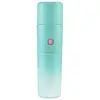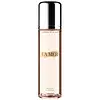What's inside
What's inside
 Key Ingredients
Key Ingredients

 Benefits
Benefits

 Concerns
Concerns

 Ingredients Side-by-side
Ingredients Side-by-side

Water
Skin ConditioningButylene Glycol
HumectantPentylene Glycol
Skin ConditioningNiacinamide
SmoothingSaccharomyces/Rice Ferment Filtrate
Skin ConditioningCamellia Sinensis Leaf Extract
AntimicrobialCladosiphon Okamuranus Extract
Skin ConditioningSodium Hyaluronate
HumectantLuffa Cylindrica Fruit/Leaf/Stem Extract
Skin ConditioningSalvia Sclarea Oil
MaskingFoeniculum Vulgare Oil
EmollientCitrus Aurantifolia Juice
CleansingEucalyptus Globulus Leaf Oil
PerfumingRosmarinus Officinalis Leaf Oil
MaskingRosa Multiflora Fruit Extract
MaskingCitrus Aurantium Dulcis Juice
Skin ConditioningArtemisia Princeps Leaf Extract
Skin ConditioningCymbopogon Martini Oil
MaskingCitrus Limon Juice
Skin ConditioningLavandula Angustifolia Oil
MaskingMentha Arvensis Leaf Oil
MaskingCananga Odorata Flower Oil
MaskingCrataegus Cuneata Fruit Extract
Skin ConditioningZiziphus Jujuba Fruit Extract
Skin ConditioningCitrus Paradisi Fruit Extract
Skin ConditioningPyrus Malus Fruit Extract
Skin ConditioningBelamcanda Chinensis Root Extract
Skin ConditioningEriobotrya Japonica Leaf Extract
Skin ConditioningHouttuynia Cordata Extract
Skin Conditioning1,2-Hexanediol
Skin ConditioningPPG-6-Decyltetradeceth-20
EmulsifyingPEG-30 Glyceryl Isostearate
PEG-50 Glyceryl Isostearate
CleansingPropanediol
SolventSodium Citrate
BufferingPentasodium Pentetate
Citric Acid
BufferingEthylhexylglycerin
Skin ConditioningAlcohol
AntimicrobialPhenoxyethanol
PreservativeWater, Butylene Glycol, Pentylene Glycol, Niacinamide, Saccharomyces/Rice Ferment Filtrate, Camellia Sinensis Leaf Extract, Cladosiphon Okamuranus Extract, Sodium Hyaluronate, Luffa Cylindrica Fruit/Leaf/Stem Extract, Salvia Sclarea Oil, Foeniculum Vulgare Oil, Citrus Aurantifolia Juice, Eucalyptus Globulus Leaf Oil, Rosmarinus Officinalis Leaf Oil, Rosa Multiflora Fruit Extract, Citrus Aurantium Dulcis Juice, Artemisia Princeps Leaf Extract, Cymbopogon Martini Oil, Citrus Limon Juice, Lavandula Angustifolia Oil, Mentha Arvensis Leaf Oil, Cananga Odorata Flower Oil, Crataegus Cuneata Fruit Extract, Ziziphus Jujuba Fruit Extract, Citrus Paradisi Fruit Extract, Pyrus Malus Fruit Extract, Belamcanda Chinensis Root Extract, Eriobotrya Japonica Leaf Extract, Houttuynia Cordata Extract, 1,2-Hexanediol, PPG-6-Decyltetradeceth-20, PEG-30 Glyceryl Isostearate, PEG-50 Glyceryl Isostearate, Propanediol, Sodium Citrate, Pentasodium Pentetate, Citric Acid, Ethylhexylglycerin, Alcohol, Phenoxyethanol
Methyl Gluceth-20
HumectantGlycereth-26
HumectantLaminaria Saccharina Extract
Skin ProtectingAlgae Extract
EmollientSesamum Indicum Seed Oil
EmollientMedicago Sativa Seed Powder
Skin ConditioningHelianthus Annuus Seedcake
AbrasivePrunus Amygdalus Dulcis Seed Meal
AbrasiveEucalyptus Globulus Leaf Oil
PerfumingSodium Gluconate
Skin ConditioningCopper Gluconate
Skin ConditioningCalcium Gluconate
HumectantMagnesium Gluconate
Skin ConditioningZinc Gluconate
Skin ConditioningTocopheryl Succinate
AntioxidantNiacin
SmoothingSesamum Indicum Seed Powder
Skin ConditioningButylene Glycol
HumectantPPG-28-Buteth-35
Skin ConditioningPPG-5-Ceteth-20
EmulsifyingSodium Hyaluronate
HumectantCitric Acid
BufferingSodium Citrate
BufferingPolysorbate 20
EmulsifyingSucrose
HumectantCaffeine
Skin ConditioningDisodium EDTA
Benzophenone-4
UV AbsorberPhenoxyethanol
PreservativePotassium Sorbate
PreservativeParfum
MaskingLinalool
PerfumingCI 19140
Cosmetic ColorantCI 17200
Cosmetic ColorantMethyl Gluceth-20, Glycereth-26, Laminaria Saccharina Extract, Algae Extract, Sesamum Indicum Seed Oil, Medicago Sativa Seed Powder, Helianthus Annuus Seedcake, Prunus Amygdalus Dulcis Seed Meal, Eucalyptus Globulus Leaf Oil, Sodium Gluconate, Copper Gluconate, Calcium Gluconate, Magnesium Gluconate, Zinc Gluconate, Tocopheryl Succinate, Niacin, Sesamum Indicum Seed Powder, Butylene Glycol, PPG-28-Buteth-35, PPG-5-Ceteth-20, Sodium Hyaluronate, Citric Acid, Sodium Citrate, Polysorbate 20, Sucrose, Caffeine, Disodium EDTA, Benzophenone-4, Phenoxyethanol, Potassium Sorbate, Parfum, Linalool, CI 19140, CI 17200
 Reviews
Reviews

Ingredients Explained
These ingredients are found in both products.
Ingredients higher up in an ingredient list are typically present in a larger amount.
Butylene Glycol (or BG) is used within cosmetic products for a few different reasons:
Overall, Butylene Glycol is a safe and well-rounded ingredient that works well with other ingredients.
Though this ingredient works well with most skin types, some people with sensitive skin may experience a reaction such as allergic rashes, closed comedones, or itchiness.
Learn more about Butylene GlycolCitric Acid is an alpha hydroxy acid (AHA) naturally found in citrus fruits like oranges, lemons, and limes.
Like other AHAs, citric acid can exfoliate skin by breaking down the bonds that hold dead skin cells together. This helps reveal smoother and brighter skin underneath.
However, this exfoliating effect only happens at high concentrations (20%) which can be hard to find in cosmetic products.
Due to this, citric acid is usually included in small amounts as a pH adjuster. This helps keep products slightly more acidic and compatible with skin's natural pH.
In skincare formulas, citric acid can:
While it can provide some skin benefits, research shows lactic acid and glycolic acid are generally more effective and less irritating exfoliants.
Most citric acid used in skincare today is made by fermenting sugars (usually from molasses). This synthetic version is identical to the natural citrus form but easier to stabilize and use in formulations.
Read more about some other popular AHA's here:
Learn more about Citric AcidThis oil is derived from the leaves of Eucalyptus Globulus, a type of Eucalyptus tree native to Australia.
Though this oil shows antibacterial and antioxidant activity, it is also a known skin-irritant due to its fragrance components.
Phenoxyethanol is a preservative that has germicide, antimicrobial, and aromatic properties. Studies show that phenoxyethanol can prevent microbial growth. By itself, it has a scent that is similar to that of a rose.
It's often used in formulations along with Caprylyl Glycol to preserve the shelf life of products.
Sodium Citrate is the sodium salts of citric acid. In skincare, it is used to alter pH levels and acts as a preservative.
Its main functions are to maintain the pH of a product and neutralize metal ions.
The acidity of our skin is maintained by our glands and skin biome; normal pH level of skin is slightly acidic (~4.75-5.5).
Being slightly acidic allows our skin to create an "acid mantle". This acid mantle is a thin barrier that protects our skin from bacteria and contaminants.
Learn more about Sodium CitrateSodium Hyaluronate is hyaluronic acid's salt form. It is commonly derived from the sodium salt of hyaluronic acid.
Like hyaluronic acid, it is great at holding water and acts as a humectant. This makes it a great skin hydrating ingredient.
Sodium Hyaluronate is naturally occurring in our bodies and is mostly found in eye fluid and joints.
These are some other common types of Hyaluronic Acid:
Learn more about Sodium Hyaluronate